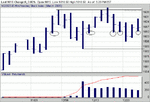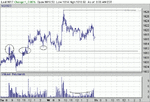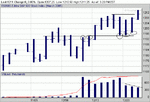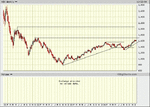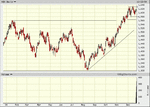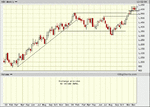This thread will have a focus on trading a retracement (ret) after a break out (bo).
For me, the number one factor in beginning our study, is a strong understanding of support and resistance. (S/R) Whatever entry opportunity may present itself, will do so as price leaves this area.
Consolidation of price as it forms the most recent S/R area, accompanied by a dry up in volume will be a crucial step for a BO, therefore a point of study.
Consolidation need not be limited to a horizontal price pattern. A “hinge” for example, can produce the desired results.
Posting anointed charts for illustration is encouraged.
Choosing an exit strategy is important as well, and as such will be on topic, as long as it gets posted and studied.
For me, the number one factor in beginning our study, is a strong understanding of support and resistance. (S/R) Whatever entry opportunity may present itself, will do so as price leaves this area.
Consolidation of price as it forms the most recent S/R area, accompanied by a dry up in volume will be a crucial step for a BO, therefore a point of study.
Consolidation need not be limited to a horizontal price pattern. A “hinge” for example, can produce the desired results.
Posting anointed charts for illustration is encouraged.
Choosing an exit strategy is important as well, and as such will be on topic, as long as it gets posted and studied.

